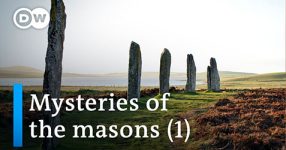Every year, a million people flock to Stonehenge, asking the age-old questions about this enigmatic monument. Who built it? How was it built? And why? In the documentary “Secrets of Stonehenge”, archaeologists embark on a groundbreaking study of Stonehenge, armed with new tools and fresh perspectives. Colin Richards likens the construction of Stonehenge to their own space program, creating something unprecedented. Theories about the meaning of Stonehenge, including its connection to eternity, the meaning of life and death, are explored by experts like Mike Pitts and Mike Parker Pearson.
Decoding Stonehenge’s Engineering Marvel
Stonehenge, brooding and majestic, stands as an icon of prehistory, predating Egypt’s pyramids. The circular monument, constructed in Britain’s Stone Age, exhibits ancient engineering marvels. Massive sarsen stones, weighing up to 45 tons, dominate the structure, with lintels forming a nearly perfect circle. Bluestones, transported from Wales, add to the mystery. The documentary delves into the army of archaeologists led by Mike Parker Pearson, unraveling the secrets of Stonehenge’s construction and purpose. Through extensive excavations, they unearth clues about the monument’s evolution, from the bluestones to the colossal sarsen stones.
Stonehenge’s Ancient World Resurfaces
The Stonehenge Riverside Project, a formidable team of scientists, students, and specialists, unfolds over six years of archaeological exploration. They unearth pits that once held bluestones, revealing a chronological layering of Stonehenge’s construction. The remains of Stonehenge’s dead provide a trove of information, allowing insights into the approximate ages, genders, and lifestyles of its ancient inhabitants. Despite challenges like loose cremated bone, the team gains a deeper understanding of the Stonehenge people’s sophistication and standard of living.
Beyond Stonehenge: Exploring Neolithic Practices
Stonehenge, an exceptional structure, emerges as the tip of the Neolithic iceberg. Archaeological evidence reveals a broader landscape where people constructed their own stone circles and timber circles. The documentary explores the challenges of building on such a vast scale with Stone Age technology. Andrew Young’s innovative theory involving carved stone balls adds a new perspective, suggesting a method for moving stones using ball bearings. As the team experiments with this idea, they uncover surprises in the Stonehenge landscape, including stone fragments and hammer stones.
Stonehenge’s Astronomical Alignments
Clive Ruggles, an expert in ancient astronomy, dispels the notion of Stonehenge as a mere astronomical observatory. While acknowledging an alignment with the solstices, Ruggles emphasizes that many ancient cultures worldwide incorporated celestial alignments into their monuments. The documentary highlights the Stonehenge Riverside Project’s discovery of Durrington Walls, a site linked to Stonehenge by an avenue. The alignment of these structures with the solstices suggests a connection between ceremonial practices and celestial events.
The Ceremonial Landscape and Ancestral Connections
“Secrets of Stonehenge” explores the ceremonial landscape around Stonehenge, revealing the avenue leading to the River Avon. Mike Parker Pearson’s realization of a connection between stone structures and the ancestors sparks new insights. The team uncovers evidence of feasting and dwelling areas, shifting the focus from Stonehenge as a monument for the dead to a vibrant space for the living. The discovery of mysterious grooves beneath the avenue prompts speculation about an older, manmade structure, further expanding the narrative of Stonehenge’s purpose.
Conclusions and Legacy of Stonehenge
As the documentary “Secrets of Stonehenge” unfolds, it becomes clear that Stonehenge represents the culmination of Neolithic achievements in southern Britain. The last great monument of its time, Stonehenge marks the end of an era rather than the peak of a flourishing civilization. Mike Parker Pearson suggests that it served as a ceremonial route, connecting Stonehenge to the River Avon. The mysteries surrounding Stonehenge persist, inviting ongoing exploration and speculation into the ancient minds that conceived and built this enduring marvel.












